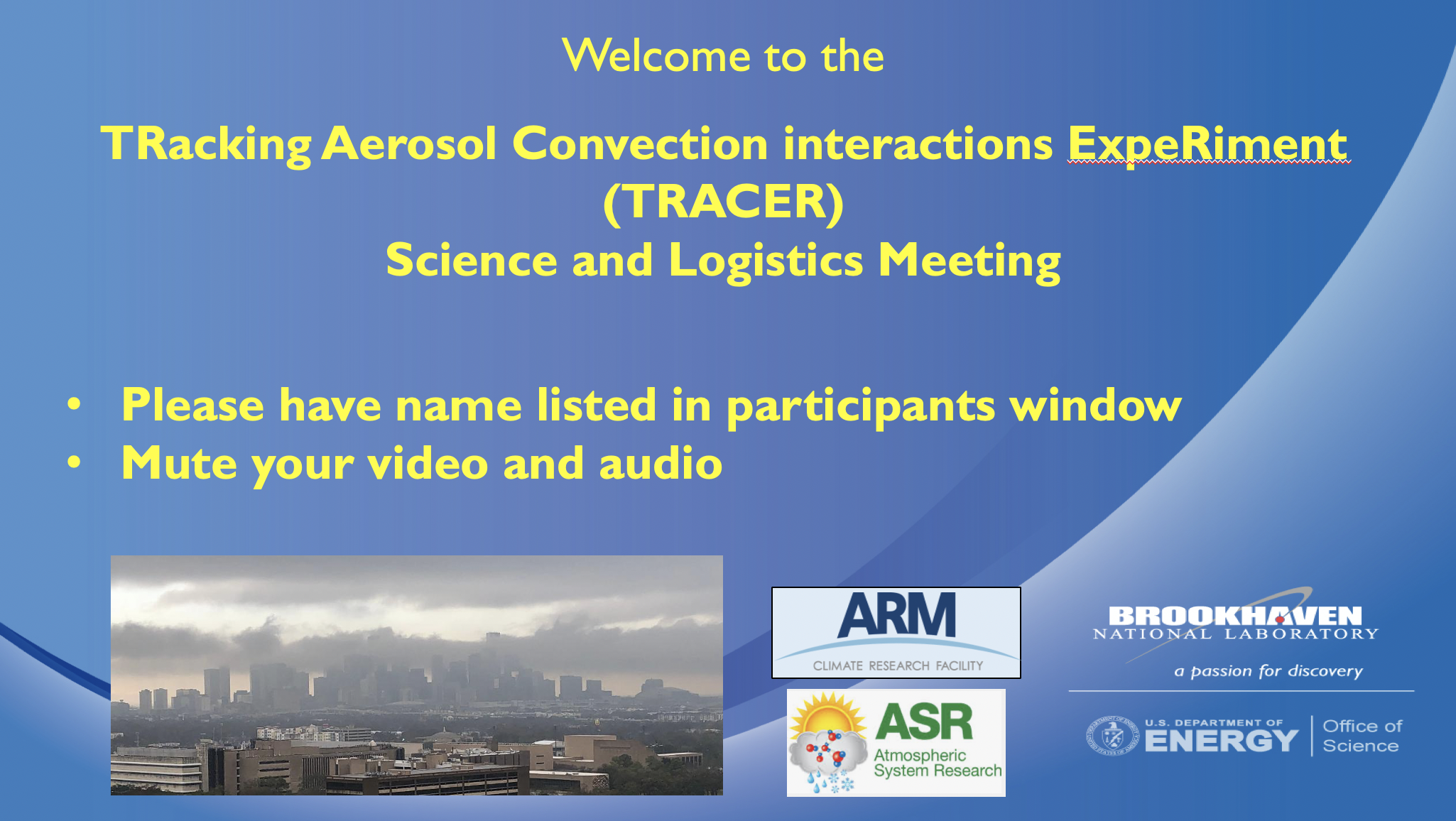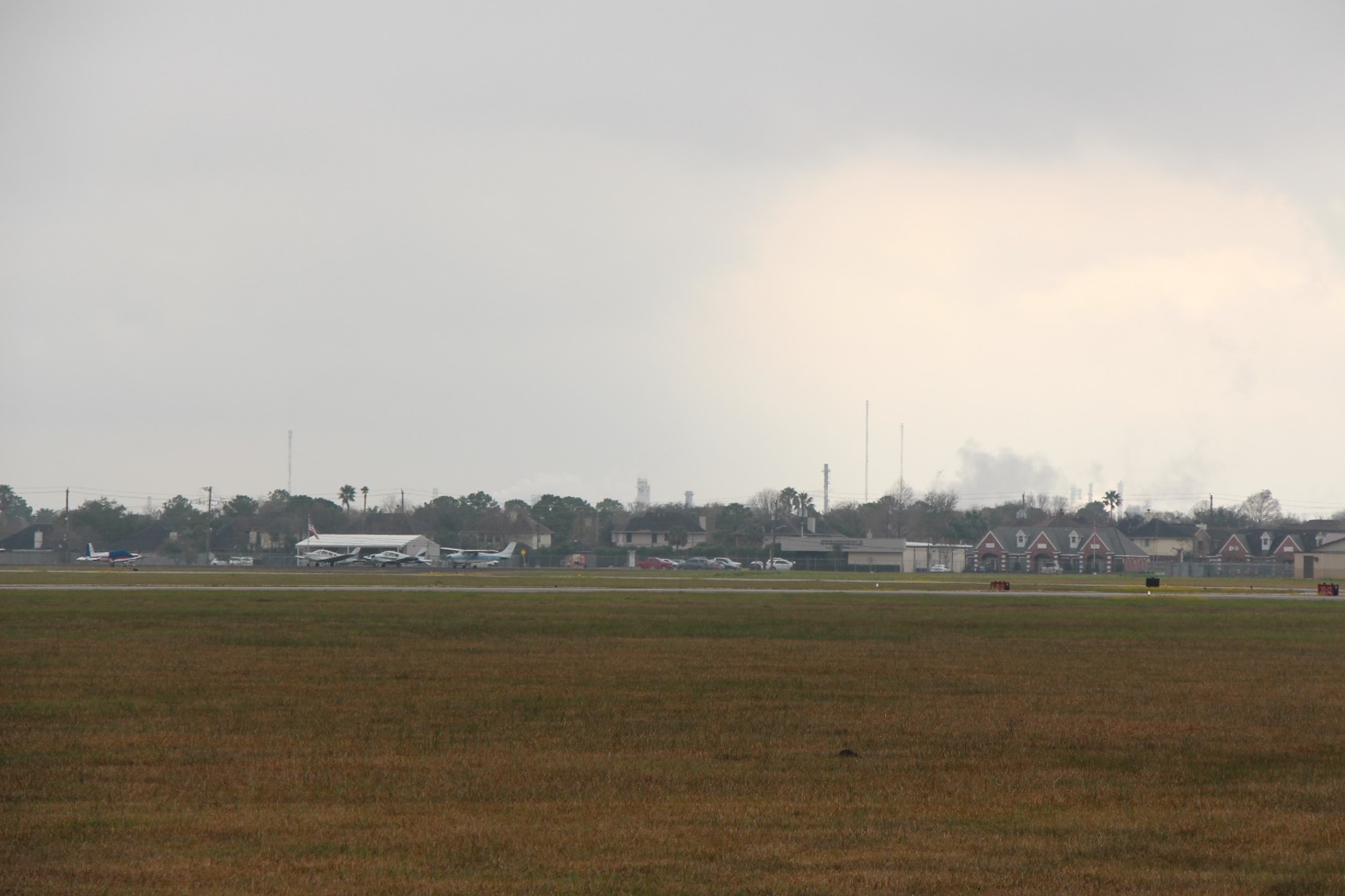TRACER Talk: Workshop Kicks Campaign Planning Into High Gear
Published: 18 May 2020
Editor’s note: Michael Jensen, a meteorologist at Brookhaven National Laboratory (BNL) in New York, is the principal investigator for the upcoming TRacking Aerosol Convection interactions ExpeRiment (TRACER). He sent in this campaign update.

The TRACER science and logistics meeting was originally planned to be held as an in-person workshop at the University of Houston. Due to travel restrictions, safety measures, and social distancing guidelines related to the COVID-19 pandemic, the meeting was held virtually April 20 and 21, 2020—about a year before the field campaign is scheduled to begin in the Houston, Texas, area.
While missing the opportunity to gather to discuss the upcoming field campaign was disappointing, the virtual meeting had the benefit of enabling participation from many more researchers from around the globe. More than 140 registered participants from five countries gathered online to continue pre-campaign activities and planning, begin coordination among participating agencies, and explore opportunities for coordination of science activities. Those participants included:
- the TRACER science team and collaborators
- ARM and Atmospheric System Research (ASR) program managers
- ARM management and infrastructure members
- researchers from NASA’s Precipitation Measurement Mission and Atmospheric Composition programs
- staff from the Texas Commission on Environmental Quality (TCEQ)
- scientists from the NOAA Chemical Sciences Division and National Weather Service
- university researchers from the United States, United Kingdom, Germany, Israel, and France.
Morning Session

The meeting began with a “TRACER – Overview and Objectives” presentation by campaign principal investigator Michael Jensen and co-investigator Chongai Kuang, both from BNL. In addition to information on the timeline, siting, and instrumentation for the TRACER campaign, potential impacts to TRACER due to the COVID-19 pandemic were shared. At this time, there is still much uncertainty, but no definitive impacts on the TRACER timeline. However, with that uncertainty, ARM management is considering contingency plans in the case that transport of the first ARM Mobile Facility (AMF1) or other TRACER-related preparations are delayed.
This introductory presentation was followed by a series of talks from Aerosol, Cloud, Precipitation, and Climate (ACPC) working group researchers, including Sue van den Heever (Colorado State University), Jiaxi Hu (University of Oklahoma), Scott Collis (Argonne National Laboratory), and Ann Fridlind (NASA Goddard Institute for Space Studies). This ACPC work provided the basis and motivation for the TRACER campaign proposal.
The Monday morning session ended with ARM updates on progress toward establishing the deployment sites, presented by Heath Powers, AMF1 site manager from Los Alamos National Laboratory (LANL). A highlight of Heath’s presentation was the announcement that La Porte Municipal Airport has been selected as the AMF1 location for TRACER.
In addition, participants heard about potential tethered balloon system operations (Dari Dexheimer, Sandia National Laboratories); radar system preparations (Andrei Lindenmaier, Pacific Northwest National Laboratory); and radar cell-tracking software development (Pavlos Kollias, Stony Brook University/BNL).
Afternoon Session

The first afternoon brought a series of talks on existing instrument networks in the Houston region and emerging intra/interagency participation. All these measurements promise to elevate the scientific impact of the TRACER campaign to solve important issues related to cloud and aerosol processes, aerosol-cloud interactions, air quality, and urban meteorology.
James Flynn (University of Houston) presented the available sites and instrumentation operated by the university. Weslee Copeland, a meteorologist from TCEQ, summarized the air quality and surface meteorology measurements in the Houston region. Tim Logan (Texas A&M University) and Eric Bruning (Texas Tech University) shared recent observations from the Houston Lightning Mapping Array (HLMA) and plans to upgrade it for the TRACER campaign. The HLMA will provide detailed information on lightning charge distribution, flash location, and flash density.
Laura Judd (NASA Langley Research Center) presented plans for surface- and aircraft-based remote sensing observations by the NASA Atmospheric Composition program during the latter half of the TRACER intensive observation period. These measurements will provide some important constraints on aerosol vertical profiles, boundary-layer depths, and tropospheric mixing, while also expanding the scope of research activities to include air quality applications.
Proposed activities from LANL, the National Science Foundation, NOAA, NASA, the Office of Naval Research, and Germany were also presented. These measurements would provide important additional ground- and aircraft-based observations, including additional radar measurements and quantification of horizontal and vertical variability in aerosol and thermodynamics. Decisions on these proposals are expected over the course of this summer.
Day One Wrap-Up
The presentations and discussion from the first day of the workshop conveyed the excitement of the research community for the TRACER campaign, the potential new opportunities through the involvement of interagency partners, and the exceptional science that we expect to come from the campaign.
Even following the long day of presentations and discussions, the anticipation of the upcoming scientific opportunities surely made it difficult for all the TRACER researchers to sleep soundly!
Keep up with the Atmospheric Observer
Updates on ARM news, events, and opportunities delivered to your inbox
ARM User Profile
ARM welcomes users from all institutions and nations. A free ARM user account is needed to access ARM data.


















